BMW X1 vs VW T-Roc – Suorituskyky, toimintamatka ja kulutus vertailussa
Kaksi autoa, yksi kaksintaistelu: BMW X1 kohtaa VW T-Roc.
Kumpi vakuuttaa enemmän suorituskyvyssä, kulutuksessa ja hinta–laatusuhteessa? Selvitä nyt!
Breaking Down the Battle: BMW X1 vs. VW T-Roc
The BMW X1 and the VW T-Roc are two titans in the compact SUV market, offering drivers a balance of performance, technology, and style. Both vehicles have their unique strengths, catering to different preferences. Let’s delve into their technical details and innovations to see how they stack up against each other.
Design and Dimensions
When it comes to design, the BMW X1 and VW T-Roc both exude a distinctively modern and sleek aesthetic. The X1 measures 4500 mm in length, offering a slightly larger presence on the road compared to the T-Roc's 4271 mm. The X1's width is 1845 mm, providing a broader stance than the T-Roc's 1819 mm. In terms of height, the X1 stands at 1642 mm, taller than the T-Roc's 1584 mm, contributing to its more commanding SUV silhouette.
Engine and Performance
The BMW X1 offers a versatile range of engines including diesel, petrol, mild hybrid (MHEV), and plug-in hybrid options. It delivers a power output ranging from 136 HP to a robust 326 HP in its advanced models. Notably, the X1 can accelerate from 0 to 100 km/h in as little as 5.4 seconds, showcasing its prowess in speed and agility. The maximum speed achieved by the X1 is an impressive 250 km/h, highlighting its capabilities on the open road.
The Volkswagen T-Roc offers petrol and diesel engines, providing power outputs from 115 HP to 300 HP. It accelerates from 0 to 100 km/h in about 4.9 seconds at its peak performance, illustrating its sporty character. The T-Roc's top speed reaches up to 250 km/h, matching the X1's performance in high-speed scenarios.
Fuel Efficiency and Environment
For the environmentally conscious driver, the BMW X1's plug-in hybrid variant offers a remarkable electric range of 83 km on a full charge, with a minimal consumption of 0.8 L/100 km. CO2 emissions range from 17 to 175 g/km depending on the model.
On the other hand, the VW T-Roc provides an efficient consumption spectrum from 4.7 to 8.5 L/100 km, with CO2 emissions between 125 to 194 g/km. The T-Roc doesn't feature a plug-in hybrid option, which can be a tipping point for eco-conscious buyers.
Interior and Practicality
Both SUVs comfortably seat five passengers. However, when it comes to trunk capacity, the BMW X1 offers more room with up to 540 liters, making it a more practical choice for families or those needing additional cargo space. The T-Roc, though slightly more compact, provides up to 445 liters of boot space, still treating occupants to a versatile utility.
Technological Features
BMW's reputation for cutting-edge technology is evident in the X1, featuring an array of driver assistance systems and connectivity options. Its enhanced infotainment system and advanced safety features ensure a futuristic driving experience.
Volkswagen doesn’t fall short either, with the T-Roc boasting a suite of tech-savvy features, including a modern infotainment platform and intelligent safety systems that offer peace of mind on the road.
Conclusion
The choice between the BMW X1 and the VW T-Roc boils down to personal preferences and priorities. The X1 might appeal to those in search of powerful performance, advanced hybrid options, and more space. Meanwhile, the T-Roc serves as an excellent choice for those desiring sporty dynamics and efficiency at a potentially lower entry price. Both vehicles stand out as strong contenders in the bustling SUV market, each bringing unique strengths to the table.
Tässä mennään yksityiskohtiin: tekniset erot tarkemmin
Kustannukset ja kulutus: Hinta ja tehokkuus ovat usein ensimmäiset valintakriteerit auton ostossa. Tässä näkyy, kumpi malli on pitkällä aikavälillä edullisempi – tankatessa, ladatessa tai hankintahinnassa.
VW T-Roc on hinnassa selvä edullisempi – sen lähtöhinta on 30800 €, kun taas BMW X1 maksaa 44600 €. Ero on noin 13755 €.
Polttoaineenkulutuksessa näkyy ero: BMW X1 kuluttaa 0.80 L ja on siten ratkaiseva taloudellisempi kuin VW T-Roc, jonka kulutus on 5.50 L. Ero on noin 4.70 L /100 km.
Moottori ja suorituskyky: Moottorin alta paljastuu, kumpi malli on urheilullisempi ja kiihtyy paremmin.
Moottoritehossa BMW X1 on ratkaiseva etulyöntiasemassa – 326 hv verrattuna 150 hv:een. Ero on noin 176 hv hv.
Kiihdytyksessä 0–100 km/h BMW X1 on selvä nopeampi – 5.40 s vs. 8.90 s. Ero on noin 3.50 s sekuntia.
Huippunopeudessa BMW X1 on jonkin verran edellä – se yltää 250 km/h:een, kun taas VW T-Roc saavuttaa 212 km/h. Ero on noin 38 km/h.
Vääntömomentissa näkyy myös ero: BMW X1 vetää merkittävä voimakkaammin, 477 Nm verrattuna 250 Nm:een. Eroa on noin 227 Nm.
Tila ja käytännöllisyys: Sisätilat, tavaratila ja kantavuus ratkaisevat auton arjen käytettävyyden. Mukavuus ja joustavuus ovat avainasemassa.
Molemmissa autoissa on tilaa 5 henkilölle.
Omapainossa VW T-Roc on tuskin havaittava kevyempi – 1465 kg verrattuna 1575 kg:een. Painoero on noin 110 kg.
Tavaratilan koossa BMW X1 tarjoaa vähän enemmän – 540 L verrattuna 475 L:een. Ero on noin 65 L.
Maksimikantavuudessa BMW X1 pärjää jonkin verran paremmin – jopa 1600 L, noin 250 L enemmän kuin VW T-Roc.
Kantavuudessa VW T-Roc on vähäinen parempi – 515 kg verrattuna 500 kg:een. Ero on noin 15 kg.
Yhteenvetomme: BMW X1 osoittautuu olevan voittaa vertailun selvästi ja saa siksi tittelin DriveDuel Champion!
Tässä vertailussa BMW X1 on monipuolisempi kokonaisuus.
BMW X1
BMW X1 yhdistää tyylikkään muotoilun ja käytännöllisyyden, mikä tekee siitä erinomaisen valinnan kaupunkiajoon. Sen tilava sisätila tarjoaa mukavuutta ja monipuolisuutta, mikä on erityisen tärkeää perheille ja aktiivisille elämäntavoille. Lisäksi X1:n ajettavuus on huipputasoa, mikä takaa nautinnolliset ajokokemukset vaihtelevissa olosuhteissa.
Tiedot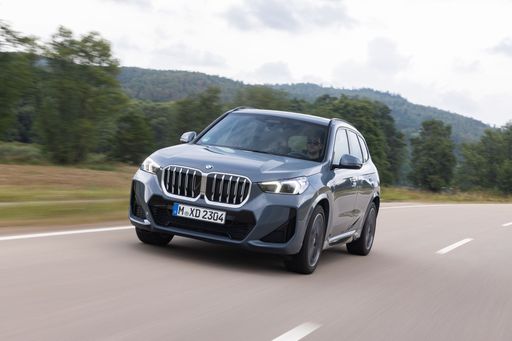 @ press.bmwgroup.com
@ press.bmwgroup.com
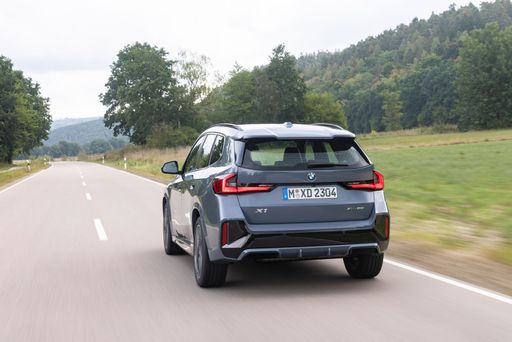 @ press.bmwgroup.com
@ press.bmwgroup.com
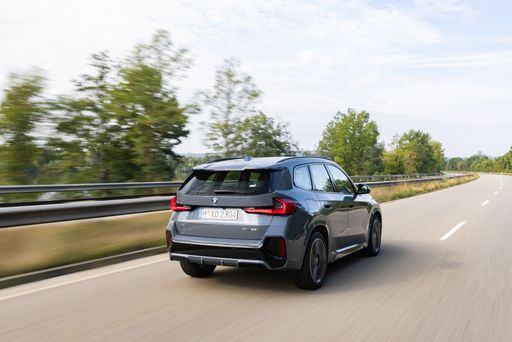 @ press.bmwgroup.com
@ press.bmwgroup.com
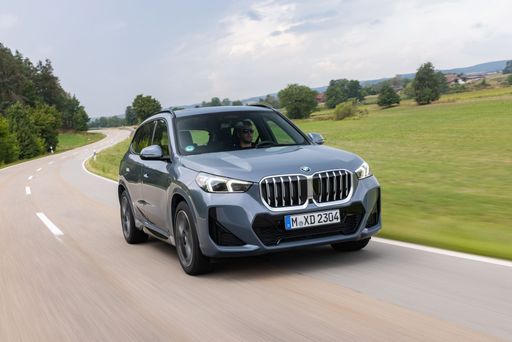 @ press.bmwgroup.com
@ press.bmwgroup.com
 @ press.bmwgroup.com
@ press.bmwgroup.com
VW T-Roc
Volkswagen T-Roc on moderni ja tyylikäs kompaktik SUV, joka yhdistää mukavuuden ja käytännöllisyyden. Sen rohkea muotoilu ja monipuoliset sisätilat tekevät siitä erinomaisen valinnan sekä kaupunkiajoon että pidemmille matkoille. T-Roc tarjoaa myös laajan valikoiman älykkäitä varusteita, jotka parantavat ajokokemusta ja turvallisuutta.
Tiedot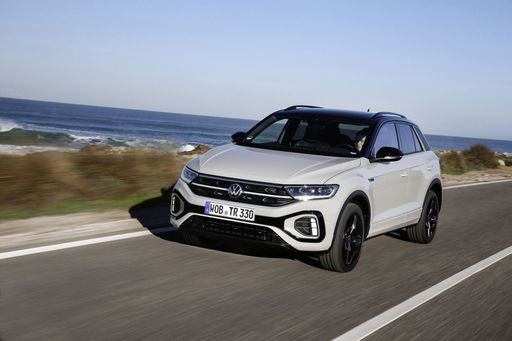 @ Volkswagen
@ Volkswagen
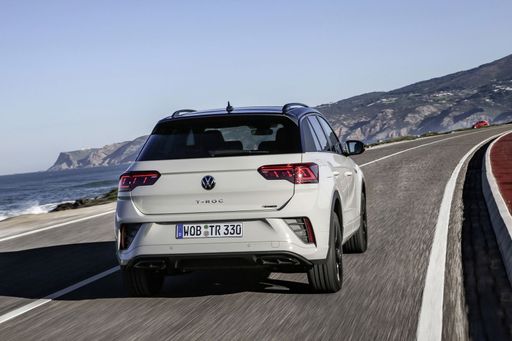 @ Volkswagen
@ Volkswagen
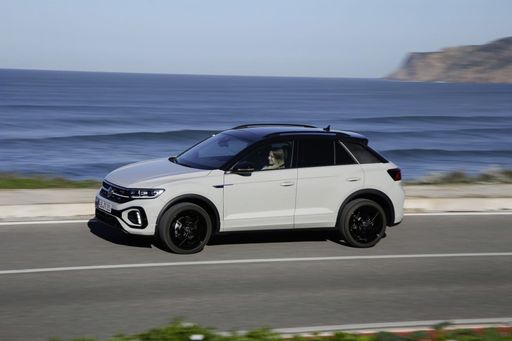 @ Volkswagen
@ Volkswagen
 @ Volkswagen
@ Volkswagen

|

|
|
|
|
Kustannukset ja kulutus |
|
|---|---|
|
Hinta
44600 - 64800 €
|
Hinta
30800 - 44300 €
|
|
Kulutus L/100km
0.8 - 7.7 L
|
Kulutus L/100km
5.5 - 6.3 L
|
|
Kulutus kWh/100km
-
|
Kulutus kWh/100km
-
|
|
Sähköinen toimintasäde
83 km
|
Sähköinen toimintasäde
-
|
|
Akun kapasiteetti
14.20 kWh
|
Akun kapasiteetti
-
|
|
CO2
17 - 175 g/km
|
CO2
126 - 143 g/km
|
|
Polttoainesäiliön tilavuus
47 - 54 L
|
Polttoainesäiliön tilavuus
50 L
|
Mitat ja kori |
|
|---|---|
|
Kori
SUV
|
Kori
SUV
|
|
Istuimet
5
|
Istuimet
4 - 5
|
|
Ovet
5
|
Ovet
2 - 5
|
|
Omamassa
1575 - 1935 kg
|
Omamassa
1465 - 1539 kg
|
|
Tavaratila
490 - 540 L
|
Tavaratila
284 - 475 L
|
|
Pituus
4500 - 4505 mm
|
Pituus
4271 - 4373 mm
|
|
Leveys
1845 mm
|
Leveys
1811 - 1828 mm
|
|
Korkeus
1622 - 1642 mm
|
Korkeus
1527 - 1573 mm
|
|
Maksimi tavaratila
1495 - 1600 L
|
Maksimi tavaratila
1350 L
|
|
Kantavuus
490 - 500 kg
|
Kantavuus
368 - 515 kg
|
Moottori ja suorituskyky |
|
|---|---|
|
Moottorityyppi
Diesel MHEV, Bensiini MHEV, Plug-in hybridi, Bensiini, Diesel
|
Moottorityyppi
Bensiini, Bensiini MHEV
|
|
Vaihteisto
Automaatti
|
Vaihteisto
Manuel, Automaatti
|
|
Vaihteiston tyyppi
Kaksoiskytkin automaatti
|
Vaihteiston tyyppi
Manuaalivaihteisto, Kaksoiskytkin automaatti
|
|
Vetotapa
Etuveto, Neliveto
|
Vetotapa
Etuveto
|
|
Teho hv
136 - 326 hv
|
Teho hv
115 - 150 hv
|
|
Kiihtyvyys 0-100 km/h
5.4 - 9.2 s
|
Kiihtyvyys 0-100 km/h
8.9 - 12.3 s
|
|
Huippunopeus
190 - 250 km/h
|
Huippunopeus
187 - 212 km/h
|
|
Vääntömomentti
230 - 477 Nm
|
Vääntömomentti
200 - 250 Nm
|
|
Sylinterien lukumäärä
3 - 4
|
Sylinterien lukumäärä
3 - 4
|
|
Teho kW
100 - 240 kW
|
Teho kW
85 - 110 kW
|
|
Iskutilavuus
1499 - 1998 cm3
|
Iskutilavuus
999 - 1498 cm3
|
Yleiset |
|
|---|---|
|
Mallivuosi
2023 - 2025
|
Mallivuosi
2024 - 2025
|
|
CO2-tehokkuusluokka
D, E, B, F
|
CO2-tehokkuusluokka
E, D
|
|
Merkki
BMW
|
Merkki
VW
|
Onko BMW X1 saatavana eri vetotavoilla?
Mallia tarjotaan Etuveto tai Neliveto-versiona.
Näytetyt hinnat ja tiedot ovat arvioita, jotka perustuvat Saksan listahintoihin, ja voivat vaihdella maittain. Nämä tiedot eivät ole oikeudellisesti sitovia.
